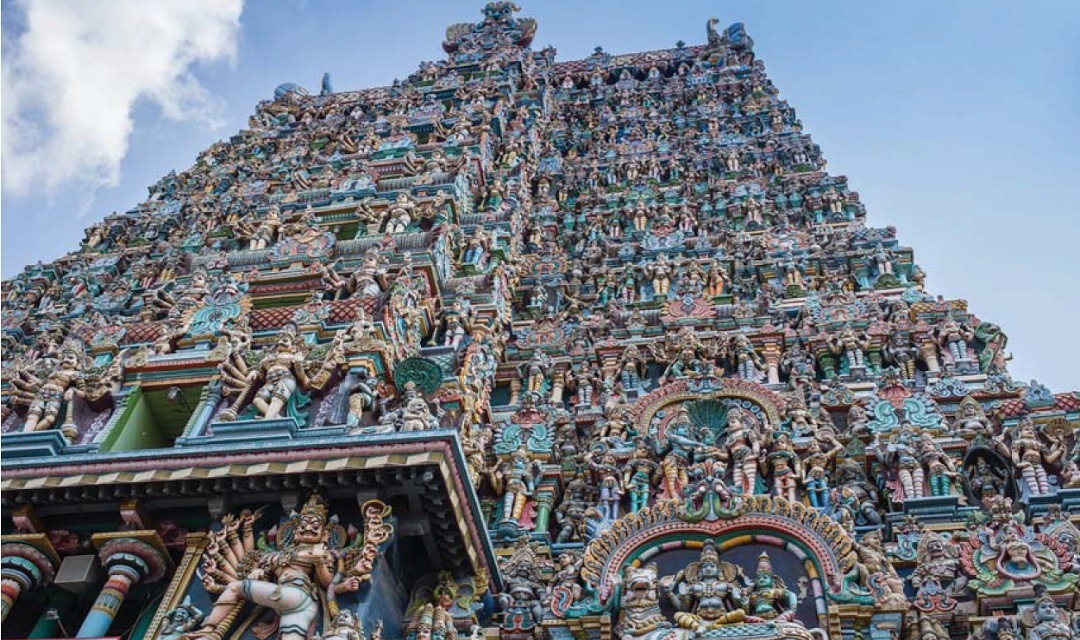This article first appeared in the Christian Research Journal, volume 41, number 1 (2018). For more information about the Christian Research Journal, click here.
Hindus believe that life is basically a search, or a quest. One cannot expect to find all the answers to life’s deepest questions in one lifetime in a simple, easy-to-digest formula. It is a long, ongoing endeavor. Hindus believe that a search of this magnitude and importance takes an immense amount of time and energy and lasts likely more than one lifetime.
Most Hindus struggle with the gospel presentation because it “takes away” the deep search of humankind, hinders spiritual progress, and impedes the evolutionary cycle of self-knowledge established by nature and Hindu’s many gods.
Christians, on the other hand, believe that one has to put his or her faith in Jesus Christ to be saved, and although Hindus do not argue with this teaching (choosing rather to overlook it), they wonder about the concept of a continuing spiritual search that has been, according to their teachings, in progress for countless ages. This occurs through many lifetimes and life forms in the cycle of birth-to-death through reincarnation — a quest for the ultimate, the final realization of Self (the inner being, the eternal Atman) within oneself, and which is the ultimate destiny of humankind. The final destination is becoming one with Brahman, the ultimate impersonal oneness.
Radhakrishnan strongly endorses this view when he says, “Religion and philosophy, life and thought, the practical and theoretical, form the eternal rhythm of the spirit. We rise from life to thought and return from thought to life in a progressive enrichment which is the attainment of ever higher levels of reality….What is built for ever is forever building.”1
The Hindu expects to endure an eternal quest for the perfection of humankind with an eternal hunger for deeper teachings of truth, life, and reality; it is difficult to accept Jesus Christ as the one whose absolute authority over conscience and whose ability and willingness to save is presented as self-certifying.
Where Hinduism argues for a continuation of this search, Jesus Christ asks for a total commitment of a person for the search to continue. Hinduism offers a tapestry of variegated colors; Jesus Christ offers Himself as the complete answer. Can we as Christian witnesses help Hindus to experience and enjoy their continuing search, with certainty, in Jesus Christ? It is possible to redirect their quest.
The Search for Reality. However reality may be defined, the Hindu searches for it and believes that one cannot limit the concept of reality to one definition or abstraction.
Radhakrishan explains the Hindu view of reality: “The Hindu attitude to religion is interesting. While fixed intellectual beliefs mark off one religion from another, Hinduism sets itself no such limits. Intellect is subordinated to intuition, dogma to experience, outer expression to inward realization. Religion is not the acceptance of academic abstractions or the celebration of ceremonies, but a kind of life or experience. It is insight into the nature of reality, or experience of reality.”2
A Hindu seeker is thus looking for an experience of reality without knowing in advance what the ultimate experience would be like. She knows rather intuitively that the experience would be “better” and “nobler” than any ever experienced before or felt. She also believes, almost totally, that one cannot enjoy that experience vicariously; she must make it absolutely her own.
A Christian Response. The follower of Christ should encourage her Hindu friend not to give up her search for reality but to continue this search after receiving Christ as her personal Savior. Jesus Christ would be presented as the “alpha” and “omega” of her individual spiritual search, the certain beginning and ending, the starting point and the closing point, with Christ all along the way.
Jesus Christ would, in such exciting cases, become the constant companion, the point of reference, and He would, in response to the intense approach of His servant, continue to reveal the riches and majesty of His glory to someone who hungers and thirsts to know more.
The Search for Truth. However truth may be known, Hindus believe that one cannot reduce or limit the concept of truth to one interpretation.
The Upanishads discuss the concept of truth in an interesting manner. First, we find a description of Brahman, the unchanging reality underlying every sector and facet of the world of change when it says, “The imperishable is real. As sparks innumerable fly upward from a blazing fire, so from the depths of the imperishable arise all things. To the depths of the imperishable they again descend.”3
Hindu seers struggle with the unchanging reality behind the world of ceaseless change. Obviously, the concept of reality has become dualistic — the changeless Brahman on the one hand and the changing world on the other. However, the Upanishads strictly maintain that there is only one reality, and the supreme purpose of life is to experience that reality.
The Upanishads resolve this by using the famous Hindu saying of “Neti. Neti” (Not this, not that). Brahman is described as one who is beyond definitions. He is beyond all human descriptions. As put in the Kena Upanishad, “Brahman is he whom speech cannot express, and from whom the mind, unable to reach him, comes away baffled….That which is not comprehended by the mind but by which the mind comprehends — know that to be Brahman.”4 Thus Brahman, the Supreme Reality, is the inexpressible, invisible, inaudible, and unthinkable ground of all existence, only to be experienced in a flash of mystical intuition.
But what about the inner world, which seems to be just as vast and as complicated as the outer world? This inner world is considered to be a bewildering sequence of sensations, perceptions, thoughts, emotions, images, memories, and feelings. The Upanishads, after careful analysis, suggest that there is something within the inner world that is just as changeless as the Brahman. They named it Atman, the Inner Being, the Self.
A Christian Response. We can challenge our Hindu friends to distinguish between philosophical truth and revealed truth. The former is intellectually stimulating; the latter is spiritually satisfying. Intellectual stimulation, though it might thrill us, never can replace spiritual satisfaction, which comes as a gift from Jesus Christ.
Let Hindus learn about the words of Peter when he talks about the saints who searched for answers and found their answers in Christ: “Of which salvation the prophets have enquired and searched diligently, who prophesied of the grace that should come unto you: Searching what, or what manner of time the spirit of Christ which was in them did signify” (1 Pet. 1:10–11 KJV).
While there is room for intense search for God and His truth, we must remember that God has made all the necessary provisions for us. He has taken the initiative; we simply accept the offer.
The Search for Life. Though there is a great deal of confusion about the concept of life in most of the Hindu texts, Hindus do not believe that what we see, hear, or observe with our physical senses is life.
Krishna, the incarnation of Vishnu, in his discourse with Arjuna, the warrior king, talks about the illusive nature of life: “Never was there a time when I was not, nor thou, nor these men, nor will there ever be a time hereafter when we shall cease to be. As the soul passes in this body through childhood, youth and age, even so is its taking on of another body. The sage is not perplexed by this.”5
A Hindu thus seeks to fulfill concurrently two vital missions in life: to seek union with the Self in the world, and to seek renunciation from the world.
A Christian Response. It is necessary to explain that Jesus Christ gives abundant LIFE to every person who comes to Him in faith by providing complete deliverance from this world that leads to death. However, this deliverance is not from the world of illusion; it is from the world of sin.
We must accept the Hindu concept of ignorance (versus knowledge), but only as ignorance of the concepts of human sin and wonderful provision in Christ for the cancellation of sin. We must share with our Hindu friends that we are talking about our inability to understand the depth and complexity of human sin, which conceals from us the glorious meaning of God’s grace for the forgiveness of our sin. It remains an idea only for the Hindu without the experiential reality.
All human endeavors, however intellectually profound and convincing, are, by themselves, totally incapable of wiping away or removing the sin of humankind. Rebellion against God cannot be argued away with scholarly and philosophical discourses. Sin against God cannot be dismissed with disciplined spiritual searches.
The End of the Journey. We must ask our Hindu friends to recognize that one cannot discover answers to eternal spiritual questions all by oneself — one needs spiritual insights and concentrated training from an external source, and that one must willingly and completely submit to the revelations of God who loves everyone so much that He died to save them.
In the end, Hindus have two choices: accept Jesus Christ as their Savior and begin to live fulfilled lives with the reality and truth of Jesus, and life in Jesus; or, they can continue to explore and search out ideas and concepts that may raise interesting questions but do not answer them. They propose the existence of certain metaphysical realities but do not promise any spiritual certainties. In the end, this leads to hopelessness and endlessness.
Suggest to your Hindu friends that the idea of a search for answers is a great one, but where/how does one begin the journey? And how does one know that one will reach the journey’s end?
Why not start with the certainty of Jesus Christ and ensure your safe arrival at the end of the road?
—C. Wayne Mayhall
Wayne Mayhall teaches comparative world religions at North Carolina Agricultural and Technical State University, Limestone College, and LIM college. He is the author of Patterns of Religions (Cengage, 2005) and Religious Autobiographies (Cengage, 2003).
NOTES
- Radhakrishnan, 1927.
- Radhakrishnan, 1927.
- Mundaka Upanishad, II.i.1.
- Kena Upanishad, 1.6.
- Bhagavada Gita 2:12, 13.









